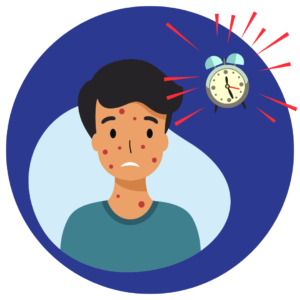Have you heard the news? Puberty, that period-of-time when children begin the wild ride into adulthood, is beginning earlier and lasts longer than the puberty you likely experienced.
Over the last several decades, studies have challenged the long-standing pubertal benchmark created back in the 1940s by pediatric endocrinologist Dr. Joseph Tanner, who identified the average age of onset as being 11 for girls and 11.5 for boys.
endocrinologist Dr. Joseph Tanner, who identified the average age of onset as being 11 for girls and 11.5 for boys.
New studies, such as ones by pediatric endocrinologist Marcia Herman-Giddens, and physician assistant Louise Greenspan have identified puberty as beginning much earlier than before, on average two years earlier for both boys and girls alike. While current research points to several causes such as endocrine disrupters, chronic stress and the overuse of antibiotics as to why this shift occurred (The New Puberty), we will have to wait until science can get back to us to confirm with certainty.
Why is this important information to know as parents, educators and guardians? Because in light of these new findings, we need to consider discussing bodies, what they do, how they change and how to care for them earlier than we might have thought necessary.
Ideally, this information should come from not one source, but several sources, including parents, guardians and educators. Tackling sensitive topics and holding conversations establish a level of trust with our students which will increase the likelihood of future conversations. Crack open that door and keep it open. Communication is key.
How much information do you share and when? Parents, guardians and educators get to decide how much detail and when these concepts are introduced, but ideally it will occur before students begin their pubertal journey and build over time. Information should be age appropriate regarding how bodies work and how to care for them as needed.
Student access to information is paramount. Teaching students about puberty and what changes come along with it allows for understanding as well as normalizing these changes. Students also walk away with learning new ways to care for their bodies and feelings, building self-confidence and autonomy.
Not to be forgotten are the emotional ups and downs that accompany the physical changes that occur. While the emotional ride of puberty can be described as filled with many highs and lows, much like a roller coaster at an amusement park, it is important to point out to kids this can present in other ways as well, ranging from the wish to withdraw, to feelings of loneliness, and shorter tempers.
While no student likes feeling that their emotions and ability to regulate them are under siege it is reassuring to learn this comes along with puberty and is normal, just as it is normal to seek out the support and guidance from trusted adults in navigating this new territory.
While bodies and feelings may be changing earlier, keep in mind chronological brain development remains the same. Some kids may look older than they are. It is important to treat kids at the age they are, not how old they look.
Puberty does not begin at one specific age, but within a rather large range of ages, meaning each child will have their own unique experience emotionally, physically and socially. Given the new research, it is time to start considering if we are beginning the conversation in time to support our earliest bloomers, and if not, how we can adjust.
For more puberty resources visit this link: https://candorhealthed.org/puberty-resources-2024/
 Written by: Susan Foley, Health Educator
Written by: Susan Foley, Health Educator
